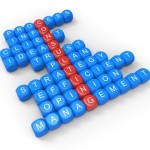Usability Fanatacism
 Too much of a good thing will inevitably corrupt it. Usability is important but can be taken to an unsustainable extreme.
Too much of a good thing will inevitably corrupt it. Usability is important but can be taken to an unsustainable extreme.
We ran into an issue recently where an email tested fine across browsers and platforms. One of the test users printed it and found that there was some odd spacing at the bottom. So we had other testers print the email with the same settings and the issue could not be duplicated. The best guess for the error was that there was a printer driver on that computer causing the spacing error. Our recommendation was to move on because the the email was easily readable despite the spacing issue, it was unlikely that many people would print the email at all, and even if the email was printed only this one particular computer was causing the problem hinting as a platform setting.
However, the communication manager wanted to be certain that everything was “perfect” so she spearheaded a few rounds of revisions to the email layout. After a week of trial and error the email printed properly on that machine.
While the problem was solved the email was sent a week late. This particular email was promoting an event which ended up not being well attended. Did the week delay cause this? That’s unlikely but an added week of time to see how the promotions were doing and make adjustments to the rest of the campaign might have made a difference.
The point is that it was not a good use of resources to fix such a minor usability problem. The fanatical quest for perfection facilitated a lackluster result. Seek for superior usability but don’t seek out every possible scenario to test. The fact is that it’s not humanly possible to test every possible scenario and create something that never encounters a glitch. Make sure to cover major usability issues like intuitive layout, browser or platform compatibility, and presentation of information. As long as glitchs are minor or extremely isolated it’s likely not in your best interest to nitpick or tern over every rock seeking a problem.





